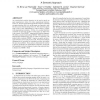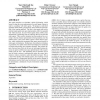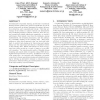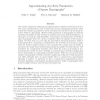158 search results - page 21 / 32 » Essential Phenomena of General Intelligence |
ATAL
2010
Springer
13 years 8 months ago
2010
Springer
An organizational modeling language can be used to specify an agent organization in terms of its roles, organizational structure, norms, etc. Such an organizational specification ...
ATAL
2010
Springer
13 years 8 months ago
2010
Springer
This paper describes an algorithm, called CQ-learning, which learns to adapt the state representation for multi-agent systems in order to coordinate with other agents. We propose ...
KDD
2005
ACM
14 years 8 months ago
2005
ACM
Discriminative sequential learning models like Conditional Random Fields (CRFs) have achieved significant success in several areas such as natural language processing, information...
WOLLIC
2007
Springer
14 years 1 months ago
2007
Springer
In this paper, we explore the Lambek-Grishin calculus LG: a symmetric version of categorial grammar based on the generalizations of Lambek calculus studied in Grishin [1]. The voca...
STACS
2009
Springer
14 years 2 months ago
2009
Springer
The notions of hypertree width and generalized hypertree width were introduced by Gottlob, Leone, and Scarcello in order to extend the concept of hypergraph acyclicity. These noti...




